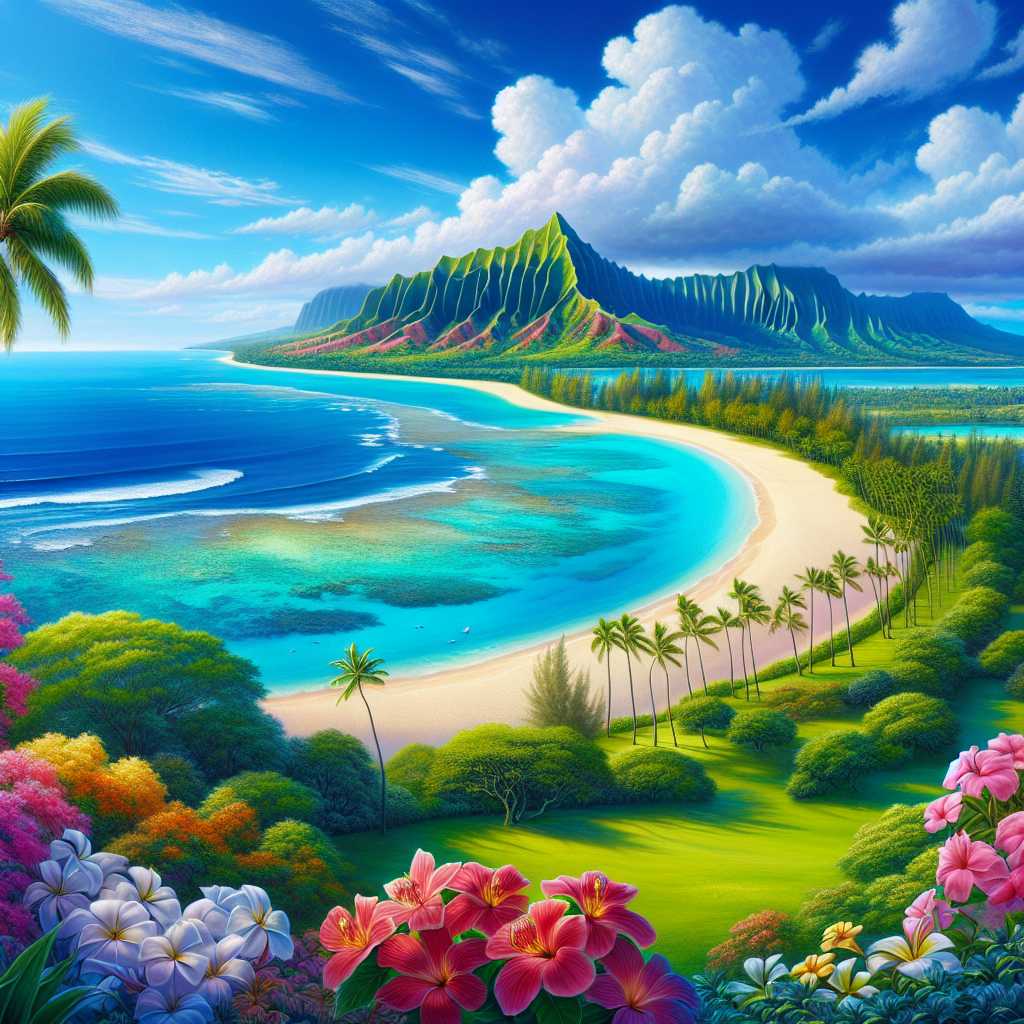The Enchanting Hawaiian Archipelago: A Mosaic of Natural Splendor and Cultural Richness
Hawaii, the Aloha State, is America’s treasure in the Central Pacific Ocean, renowned for its lush landscapes, volcanic activity, and vibrant culture. This article explores the Hawaiian Islands, their unique offerings, and their significance beyond the tourist’s picturesque sunsets.
Geography and Formation of the Hawaiian Islands
After millions of years of volcanic activity, the Hawaiian Islands emerged from the depths of the Pacific Ocean to become what we see today: a spectacular collection of rugged landscapes, tropical flora, and cascading waterfalls peppered across a vibrant ecosystem.
Each main island adds its own character to the archipelago. From the Big Island, where Kilauea continues to spout hot lava and expand the island’s borders, to Oahu’s iconic Diamond Head crater overseeing Honolulu’s urban spread; Maui’s famous Haleakalā volcano and ethereal Hana Highway; Kauai’s breathtaking Na Pali Coast and Waimea Canyon, referred to as the “Grand Canyon of the Pacific”; Molokai with its preserved Hawaiian heritage; and Lanai’s luxury retreats.
These islands are situated over 1,500 miles from the nearest continent, giving them a level of isolation that has resulted in a diverse ecology. The Northwestern Hawaiian Islands, which extend far from Kauai, form Papahānaumokuākea Marine National Monument – one of the largest marine conservation areas in the world.
Cultural Tapestry of Hawaii
The indigenous Hawaiian culture weaves together both historical traditions and contemporary life. This unique culture is a testament to the islands’ complex history marked by waves of migration, from the original Polynesian settlers to through influences recognized in local cuisine, language, hula dance narrating tales, and aloha spirit infusing Hawaiian life with warmth and friendliness.
Political History: From Kingdom to Statehood
Before becoming the 50th state of America, Hawaii flaunted a rich royal lineage which shaped much of its initial identity. Once a kingdom boasting its monarchy system, Hawaii went through tumultuous political changes with significant factors like Western influence and commercial sugar interests eventually leading to American annexation and statehood in 1959.
This evolution was not seamless and has been fraught with controversy that still plays into discussions around sovereignty and indigenous rights within the islands.
Economic Dynamics: Tourism and Beyond
While tourism dominates Hawaii’s economy—bringing millions of visitors annually eager for beaches and natural landmarks like Volcanoes National Park—there’s more to this economy than meets the travel brochure.
The Hawaiian economy also benefits from military installations, research fields motivated by unique flora and fauna, from astronomy facilitated by Mauna Kea’s clear skies, and agricultural exports inclusive of coffee beans from Kona, exotic flowers, papaya, and macadamia nuts.
Environmental Challenges and Conservation Efforts
The abundance of natural beauty comes with responsibility. Erosion, coral bleaching due to climate change, invasive species disrupting endemic wildlife—the Hawaiian environment faces several challenges. Ongoing conservation efforts exhibit a balance between development/expansion desires and maintaining the ecological harmony that certainly makes Hawaii extraordinary.
Conservation projects include monitoring endangered native species like the Hawaiian monk seal or Nēnē goose, sanctuary protections to rehabilitate coral reefs or manage fisheries sustainably ensuring future generations will coexist with Hawaii’s delicate ecosystems responsibly.

